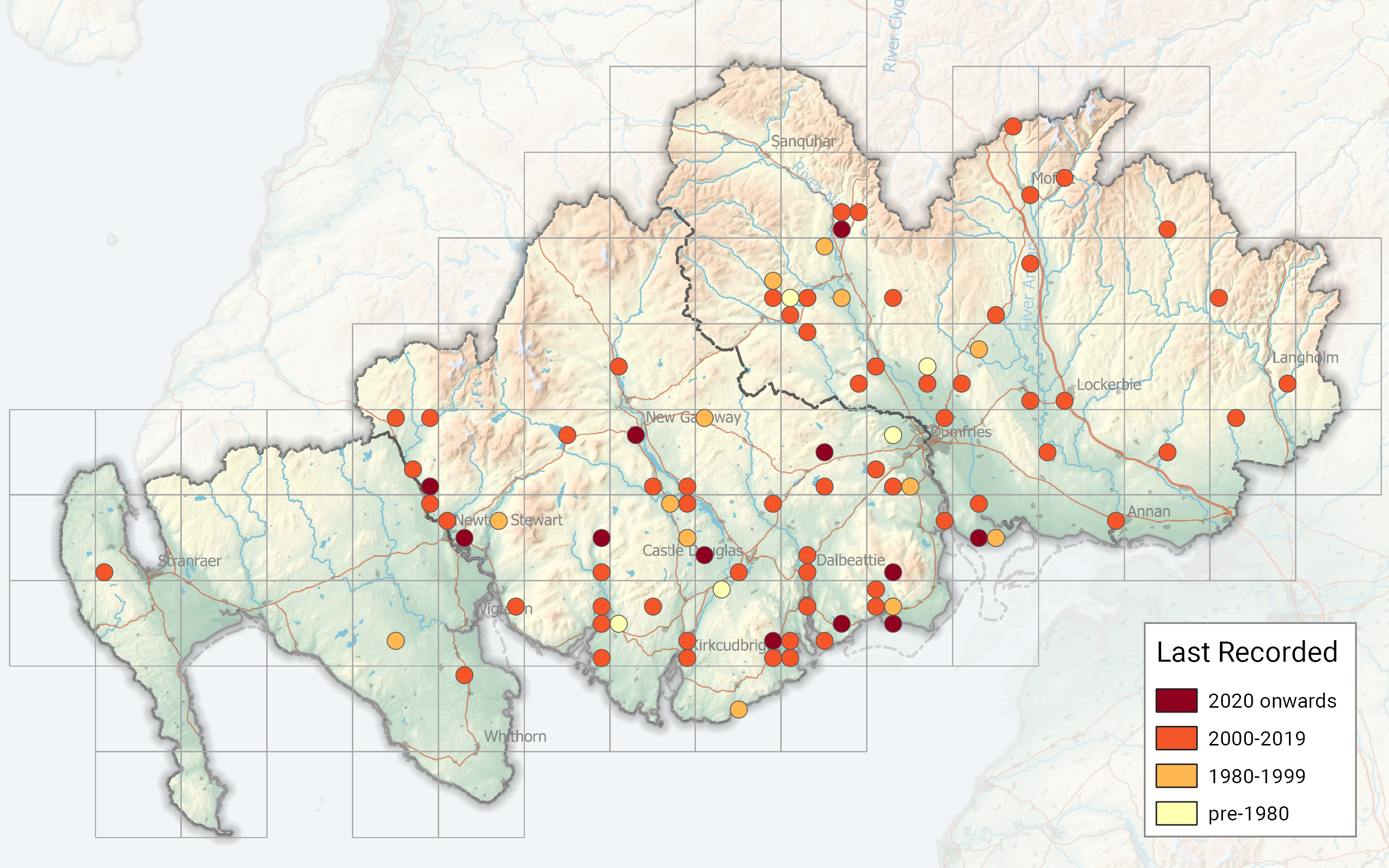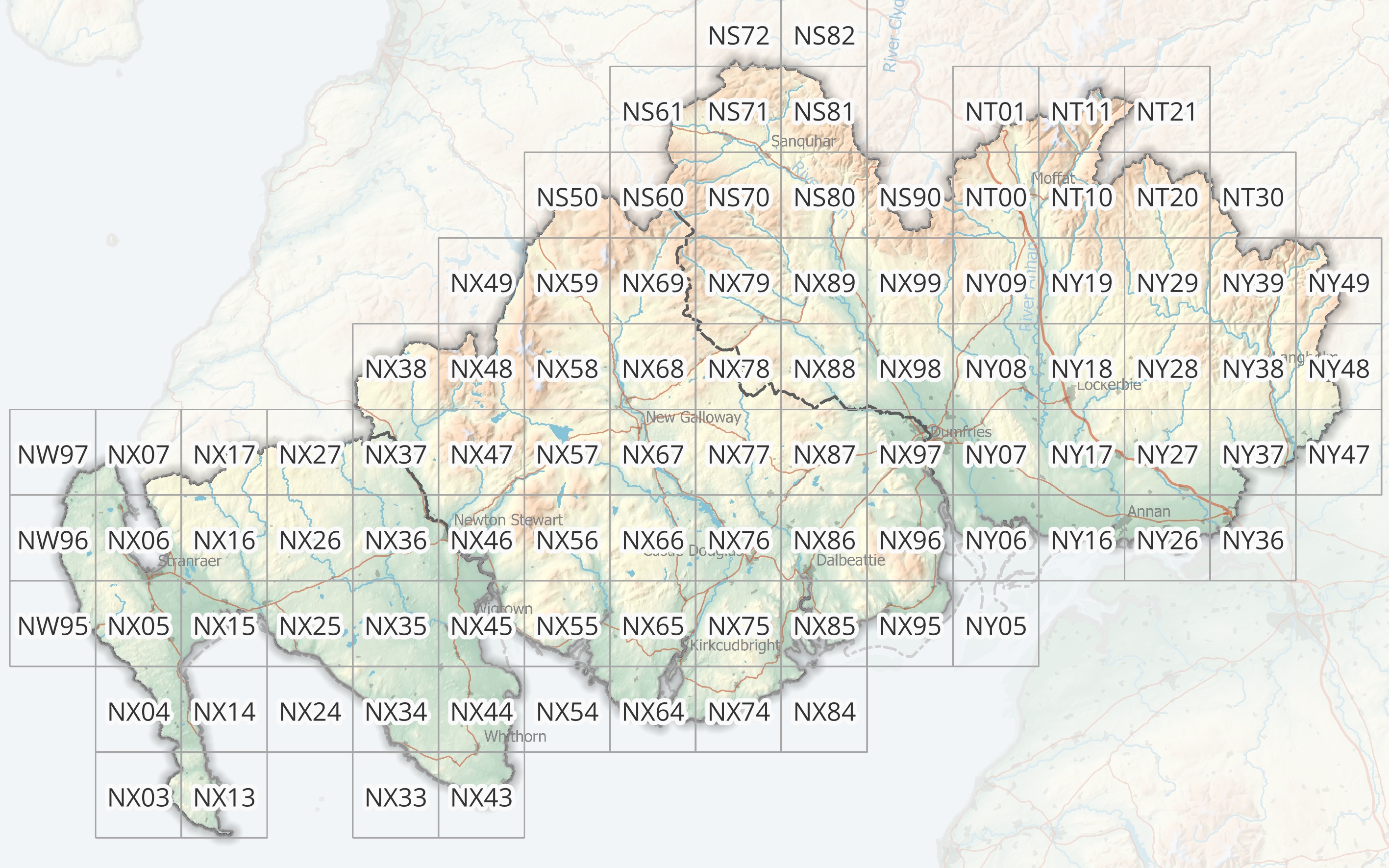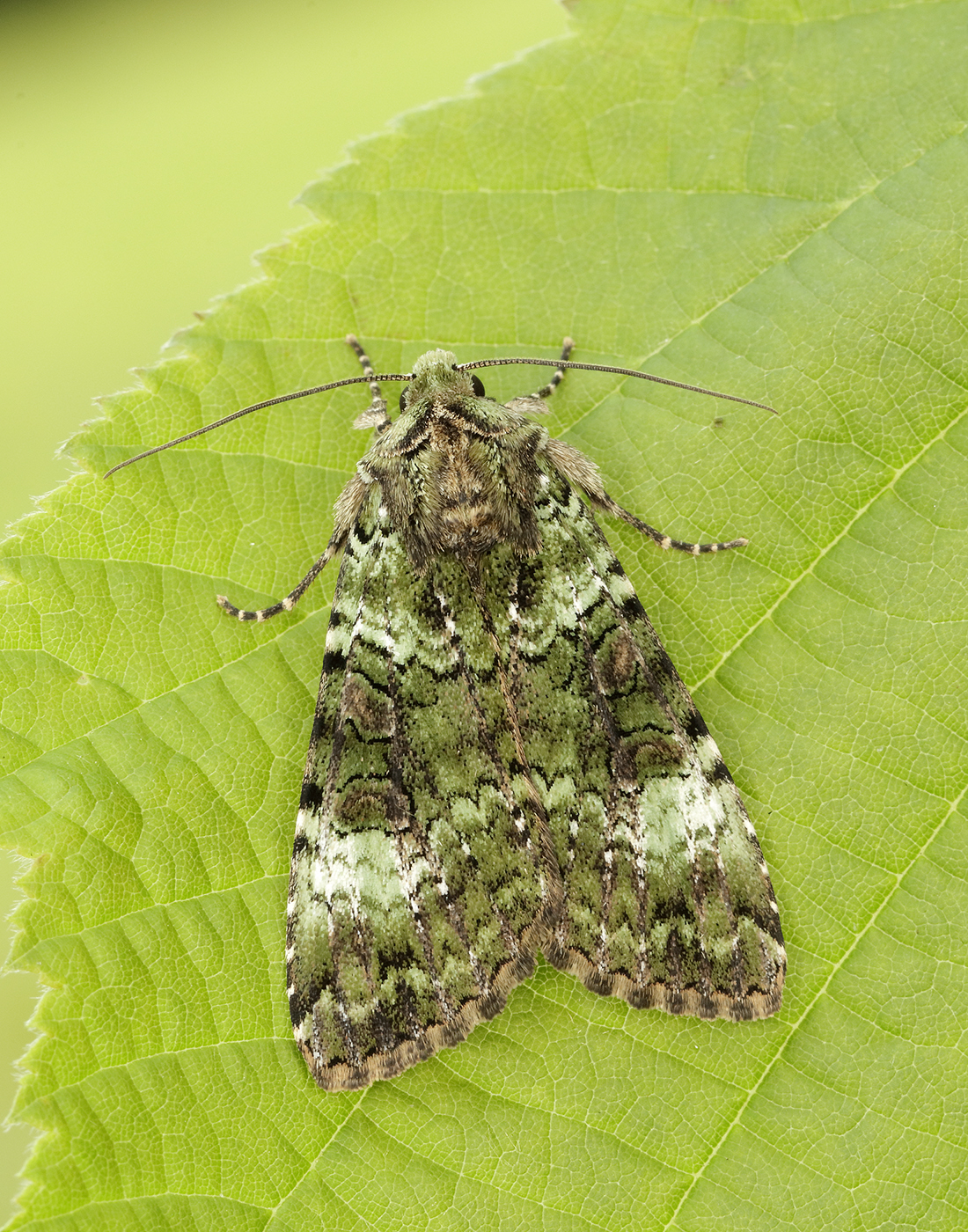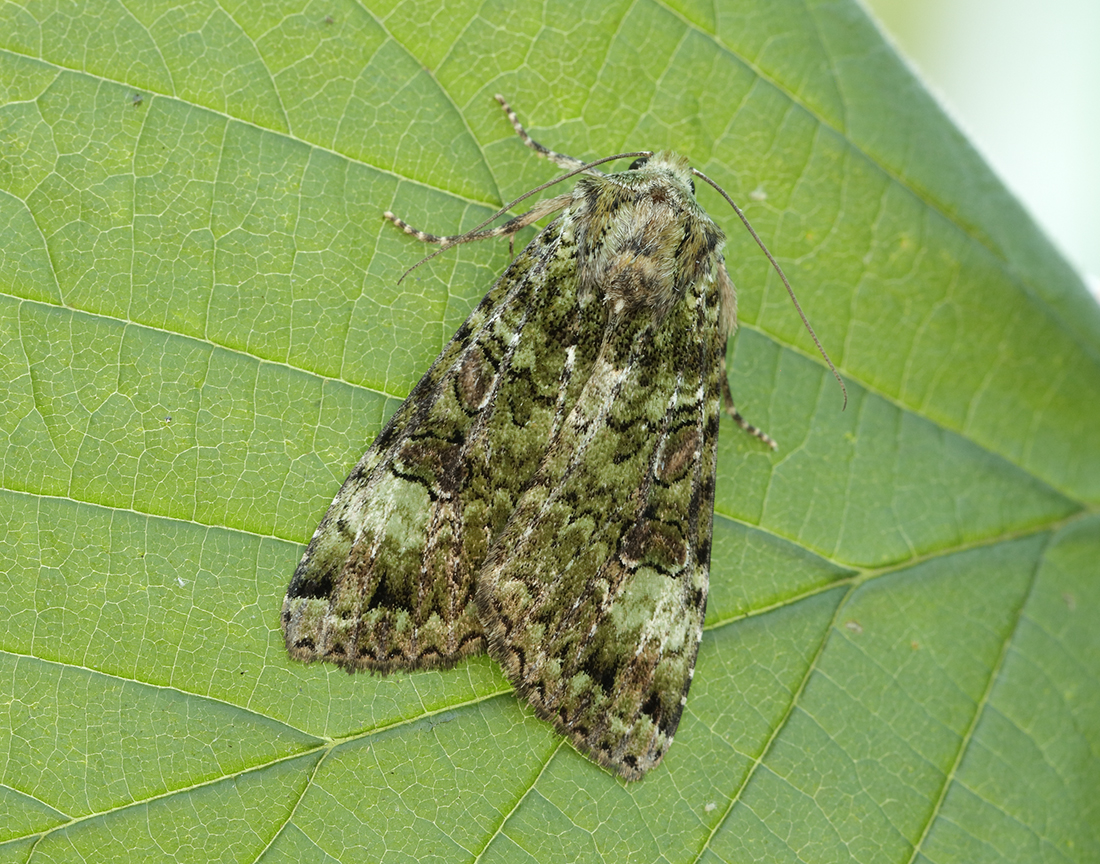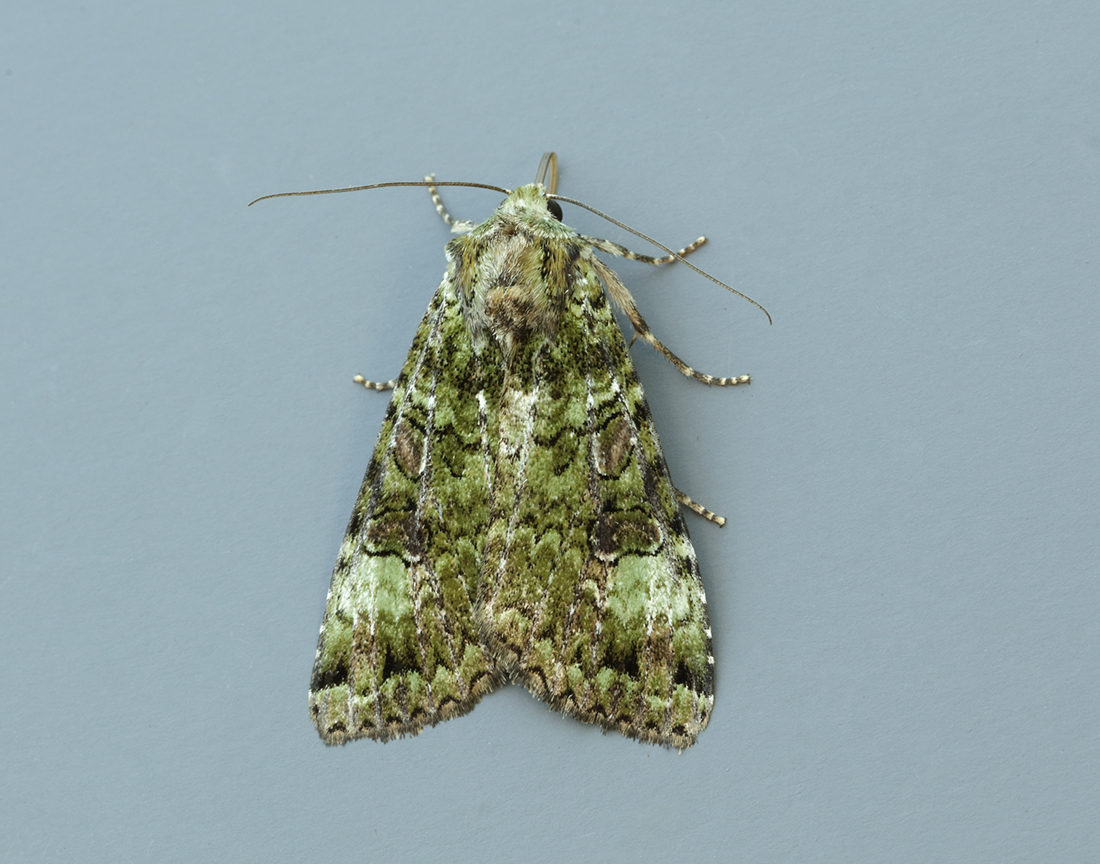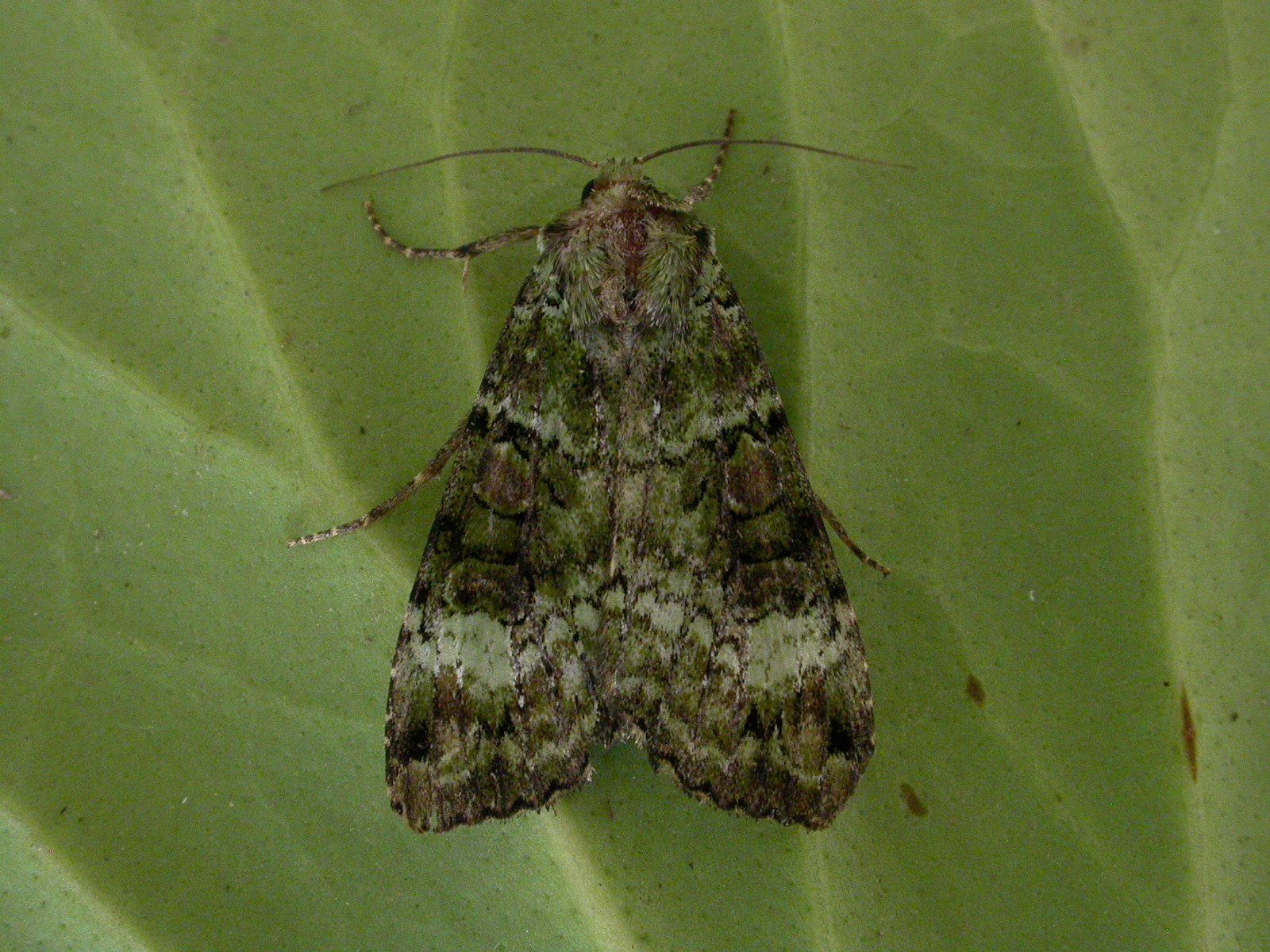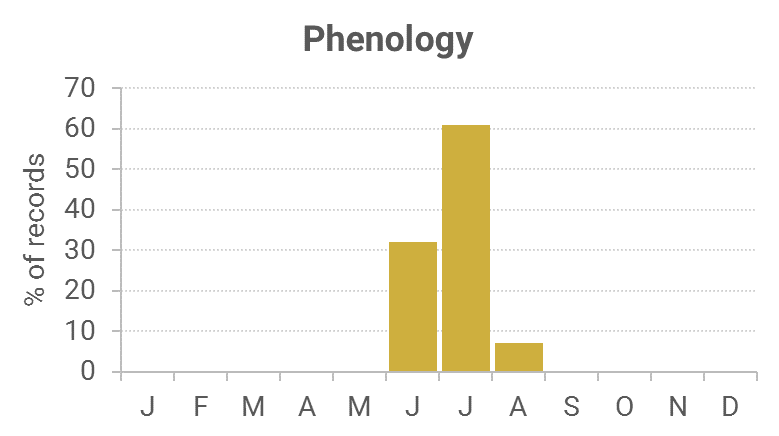Identification
Unmistakable.
Recording Method.
Attracted to light, also comes to sugar.
Life cycle
One generation. Overwinters as a larva during August to May, with pupation underground.
Larval foodplants
Bramble, Bilberry, Honeysuckle and docks to name a few herbaceous plants.
Habitat
Broadleaved woodland.
History
Lennon (1863) had stated that it was not common, but that it had occurred near Terregles (VC72). Gordon (1913) had found the Green Arches common at sugar in the woods around Corsemalzie, Wigtownshire. Another was found at rhododendron blossom on 25th June 1905. He also captured some larvae at Corsemalzie after dark on alder, which he bred on producing a fine series. Earliest date was 22nd June 1906.
Sir Arthur Duncan (1909-84) during his lifetime had found it at Closeburn, Tynron and Castlehill, Dumfries (all VC72).
During 1974-88 five of the seven Rothamsted station produced fifty records, Caerlaverock and Newton Stewart being the sites not recording it. In the early 1980s eighteen records came from the Hensol Estate/Laurieston area.
From 1992 to 2010 with more regular trapping it was found to be widespread across the region.

